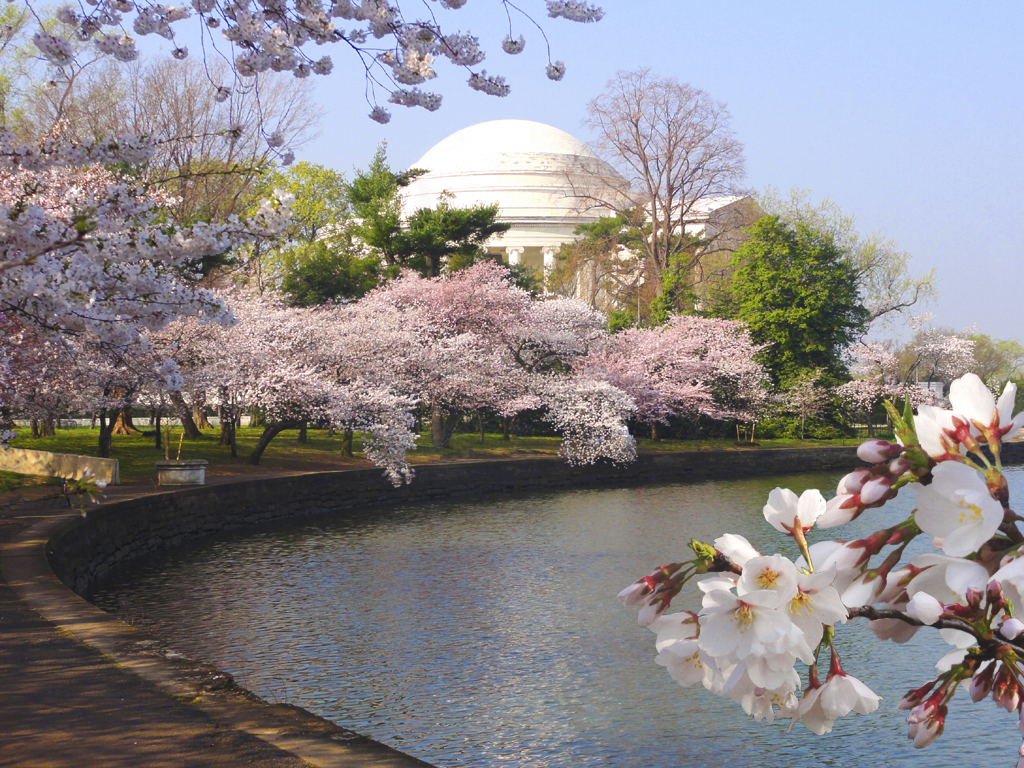The United States and Japan are the closest of allies. The two nations share a strong bond of friendship forged through decades of postwar cooperation. For over seventy years, the United States and Japan have maintained mutually beneficial interests in the realms of politics, national security, science, commerce, and economics. It is not only the American and Japanese governments who hold each other in high regard. According to opinion polls taken over multiple years, the American and Japanese publics express admiration for and consistently express favorable views of each other. This high esteem has led to abundant cross-cultural collaboration and importation that has greatly improved the standard of living in both societies.
U.S.-Japanese cultural cross-pollination has extended to the worlds of music, film, literature, sports, cuisine, architecture, and even transportation, (take, for example bullet train and superconducting magnetic levitation train technology). In turn, all of these transnational exchanges have greatly benefited consumers in both the United States and Japan. For example, the modern American consumer is safer in their car because of collaborative efforts in the automotive industry, culturally enriched because they can watch an Akira Kurosawa film or read the works of Haruki Murakami, and their culinary senses have been vastly enhanced by the deliciousness of sushi and ramen. The Japanese consumer can listen to music on their iPhone or enjoy a Hollywood film by Steven Spielberg or Martin Scorsese (both of whom were inspired early in their careers by Japanese filmmaker Akira Kurosawa) while traveling on a US-built aircraft during a holiday vacation.
In the wake of a turbulent and havoc-wreaking history, the United States and Japan have embraced each other and prospered together in a modern world. Furthermore, they stand ready for a bright future made prosperous by ever-closer cooperation and friendship. As the U.S. and Japan look forward to future gains, it is worth considering the myriad ways by which the U.S. and Japan have formed such close ties and enriched each other.
Governmental Relations and Common Political Values
In the aftermath of WWII, the United States and Japan resolved to curb any future military aggression between both nations. The formal U.S.-Japan military alliance formed in 1952 with the signing of the Treaty of San Francisco. The alliance was further cemented in 1960 in Washington, DC when representatives of both nations signed the Treaty of Mutual Cooperation and Security Between the United States and Japan. According to the Congressional Research Service, this alliance “grants the U.S. military the right to base U.S. troops-currently around 50,000 strong-and other military assets on Japanese territory, undergirding the ´forward deployment´ of U.S. troops in East Asia. In return, the United States pledges to protect Japan’s security.” As a result, the militaries of both nations cooperate on all manner of security issues, from naval exercises to the development of missile defense technology to guard against the perils posed by a nuclear-armed North Korea.
However, the alliance between the U.S. and Japan extends farther than simply military matters. Both nations share core political and diplomatic values. Both countries are representative democracies with constitutionally-limited governments. Both countries have independent judiciaries and appreciate the rule of law, thereby enabling contracts to be enforced and commerce to thrive. The U.S. and Japan are cornerstones of the rules-based liberal international order. They are members of, and active participants in, the international organizations that cultivate cooperation among countries such as the International Monetary Fund, World Trade Organization, and United Nations. Both the United States and Japan are bound by a common outlook in which the rights of citizens are safeguarded and nation-states aim to make the world a better place.
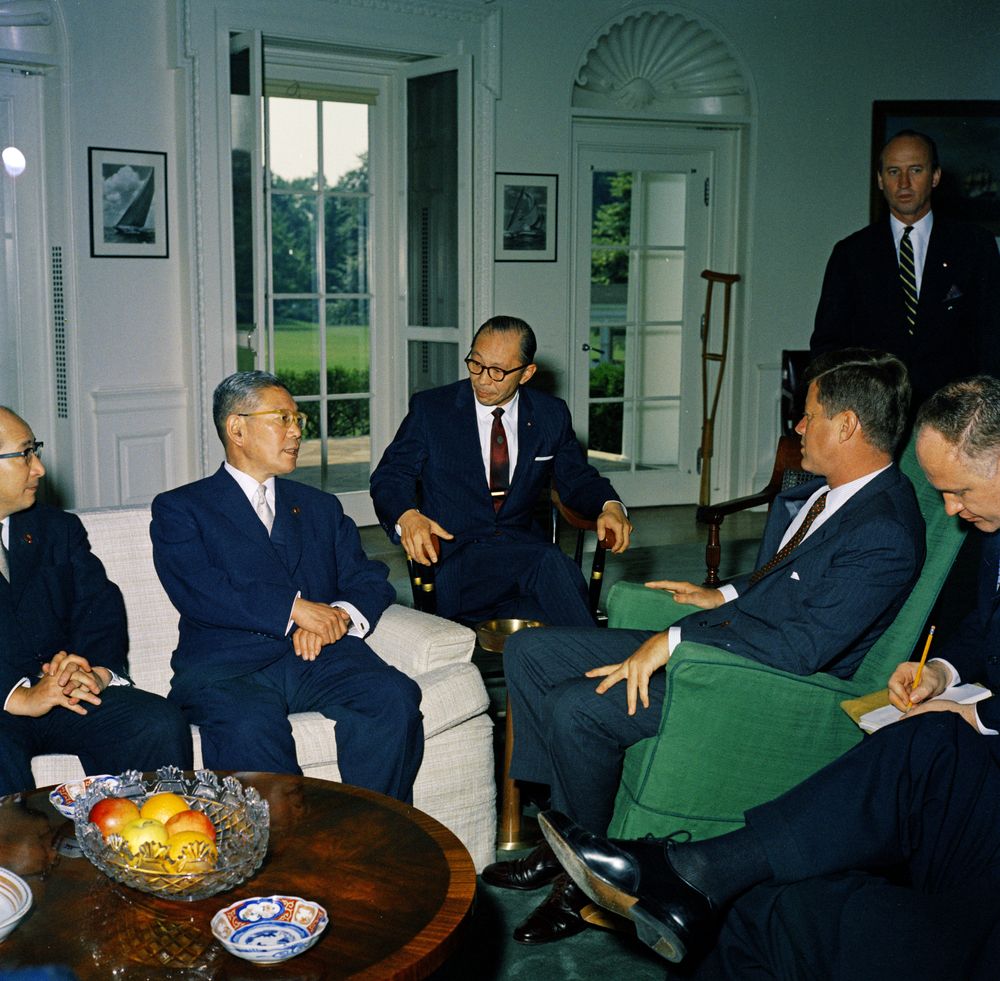
John F. Kennedy meeting with the Prime Minister of Japan Hayato Ikeda. Photo by Robert L. Knudsen, Ikeda and Kennedy 1961, marked as public domain, more details on Wikimedia Commons
Postwar Prosperity
At the conclusion of WWII, with much of Europe and East Asia in ruins, the United States emerged as the world’s preeminent economic superpower. During the following three decades U.S. GDP grew at historically high rates and the U.S. developed the world’s largest middle class. Across the Pacific, an even more stunning economic transformation transpired. Japan experienced an economic miracle that would vault it to the second largest economy in the world by the end of the Cold War.
In the immediate aftermath of WWII, the Japanese economy was in shambles. Yet, soon thereafter, Japan benefited from a series of farsighted policies and policymakers. Of particular note during this period was Hayato Ikeda, who led the Ministry of International Trade and Industry during the 1950s and served as Prime Minister from 1960 to 1964.
In 1951, the Ministry of International Trade and Industry established the Development Bank of Japan and encouraged low-cost capital for the provision of long-term growth. For the purpose of establishing what would become an incredibly competitive export-driven economy, the government also created the Japan Export-Import Bank. Decades later, this institution merged with the Overseas Economic Cooperation Fund to form the Japan Bank for International Cooperation (JBIC).
Also during this period the Japanese government both liberalized trade and invested heavily in infrastructure from airports to roadways to railways. During this period Japan displayed its technological prowess for the world to see by opening the first ever high-speed Shinkansen line from Tokyo to Osaka in anticipation of the 1964 Tokyo Summer Olympics.
The Japanese private sector, constrained by a lack of materials after WWII, proved remarkably creative and innovative. Toyota developed a scheduling system for lean manufacturing called “kanban” that made mass production far more efficient. These processes, combined with the Japanese philosophy of continuous improvement called “kaizen,” helped make Japan an economic powerhouse. Japanese industry also worked with American business management expert W. Edwards Deming to incorporate quality control principles into the manufacturing process and thereby improved efficiency by “getting it right the first time.”
Today, Toyota is the largest automobile manufacturer in the world. Many Japanese cars are also made in the United States. Currently, Toyota, Honda, Nissan, and Mazda have massive manufacturing plants across the Midwest and American South. Also, according to the U.S. Trade Representative, Japan is the United States’ fourth largest trading partner “with $204.1 billion in total (two way) goods trade during 2017.”
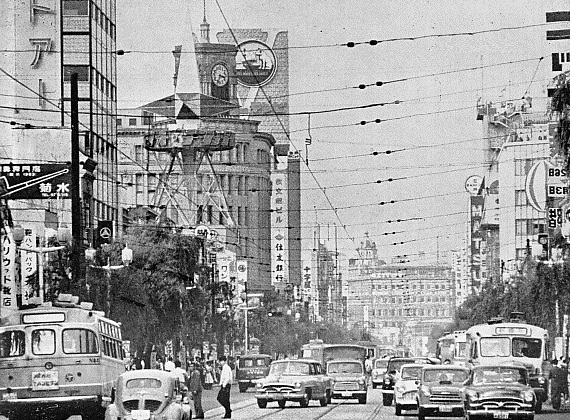
Unknown, Ginza circa 1960, marked as public domain, more details on Wikimedia Commons
Consumer Electronics
Before Apple took the consumer electronics world by storm with the introduction of the iPod, iPhone, and Apple Watch, Japanese companies were long dominant. Japanese corporations remain important players in this market, but it is worth recalling how innovative some of their past products were. Sony became a household name in the United States with the 1979 release of the Walkman, a product just as groundbreaking as the iPod twenty years later. The Walkman was a portable cassette player that gave the consumer the freedom to listen to music while on the move. Just as ubiquitous in the world of consumer electronics during this time were Casio watches, Panasonic television sets, and Nikon cameras. Because Japanese products were so sleek, efficient, and inventive, they created healthy competition for American and European designers and manufacturers and forced them to improve their product lines.
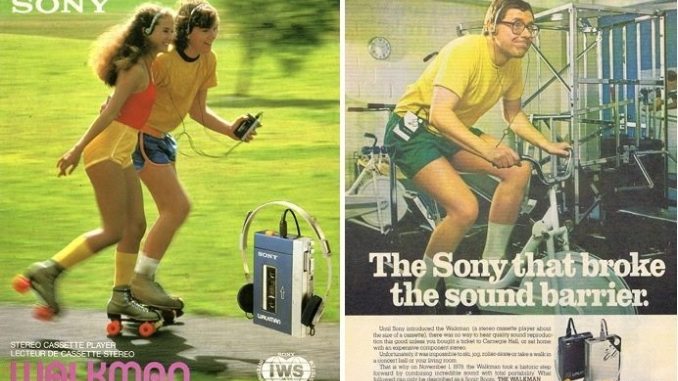
The Sony Walkman first allowed you to work out and listen to music. Photo credit to blog.eil.com and Sony Corporation
Science and Technology Cooperation
Both the United States and Japan are often at the cutting edge in the fields of science and technology. They feature many of the world’s preeminent scientists, universities, and governmental agencies dedicated to the funding and study of science-related matters. In 1988, the U.S. and Japan signed an agreement of cooperation on research and development in science and technology. According to the Japanese Ministry of Foreign Affairs, the U.S. and Japan have formally engaged in about 160 joint projects since then. These joint projects were in the fields of life sciences, information science, automation and process control, database development, global geoscience, and advanced semiconductors. In the last few years, NASA and the Japanese Space Agency have engaged in cooperation related to the International Space Station and discussed the potential for other ventures.
In addition, Japanese and American scientists are constantly sharing information and collaborating in informal ways. Many budding young Japanese scientists choose to do a portion of their graduate studies or fellowships later in their careers at American universities. For example, this year American immunologist James P. Allison of the University of Texas and Japanese immunologist Tasuku Honjo of Kyoto University shared the Nobel Prize in Physiology or Medicine. They were recognized for breakthroughs in the treatment of cancer, specifically “for their discovery of cancer therapy by inhibition of negative immune regulation.” Tasuku Honjo earned his degrees at Kyoto University but early in his research career he was a visiting fellow at the Carnegie Institution of Washington and later the National Institutes of Health in Bethesda, Maryland.
Cuisine and Culture
While American food, Ernest Hemingway novels, and Hollywood films from the age of Marlon Brando and Marilyn Monroe to the age of Leonardo DiCaprio and Emma Stone are widely available and popular in Japan, cultural cross-pollination has equally transformed and benefited American society. The American culinary scene is greatly heightened by the exquisite pleasures of Japanese cuisine. Here in Washington, DC some of the most popular and highly praised restaurants are Japanese, from the Michelin star-earning Sushi Taro to the simple elegance of the ramen bowls of Daikaya in Penn Quarter.
Furthermore, what would be of the American literary scene if not for the inspiration and creative example afforded by the precedent of haiku? Equally influential on American popular culture in the last few decades has been the explosion of anime and manga comics. Both are regularly featured at comic conventions (comic cons) all over the United States. At comic cons it is not unusual to see hundreds if not thousands of American youth expressing their fandom in fun and colorful costumes, much like earlier generations expressed their wholesome fandom of Star Wars and Star Trek.
Japanese High-Speed Rail in Texas and SCMAGLEV along the Northeast Corridor
During the 19th century as more and more rail lines were being built across the United States, Ralph Waldo Emerson remarked “Americans take to this contrivance, the railroad, as if it were the cradle in which they were born.” Unfortunately, the American passenger railroad underwent a major decline in the 20th century. Where the United States faltered, Japan succeeded. In the 20th century, Japan developed the first ever bullet train. In the 21st century, Central Japan Railway Company (JRC) is currently constructing the fastest train on the planet-the superconducting magnetic levitation train (SCMAGLEV) with a cruising speed of 311 mph. A short stretch near Mount Fuji is already in operation. The line from Tokyo to Nagoya is scheduled to open in 2027.
Fortunately for the United States, U.S.-Japan cooperation affords Americans the opportunity to reclaim the railroad as Emerson observed and modernize it for the 21st century. In Texas, developer Texas Central Railway is working to deploy JRC patented Shinkansen technology to bring about the first ever bullet train in the United States-connecting Houston and Dallas in 90 minutes. Construction on this project is expected to begin in 2019. Along the Northeast Corridor, Northeast Maglev is working to deploy the JRC patented SCMAGLEV technology. As the Northeast Corridor becomes increasingly congested with air and road traffic, SCMAGLEV technology will make going from Washington, DC to New York in an hour a fast, fun, pleasant, and environmentally friendly experience. The first leg of the route will connect Washington, DC and Baltimore – with a stop at BWI airport – in fifteen minutes. It is expected to begin operations in the next 10 years.
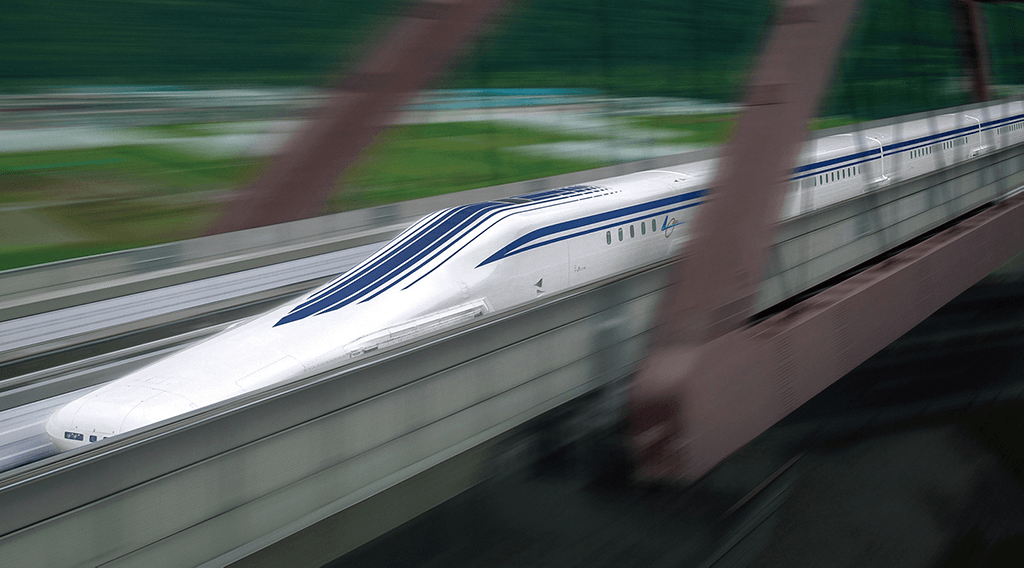
The L0 SCMAGLEV is the world’s fastest maglev train.
Maryland and Japan
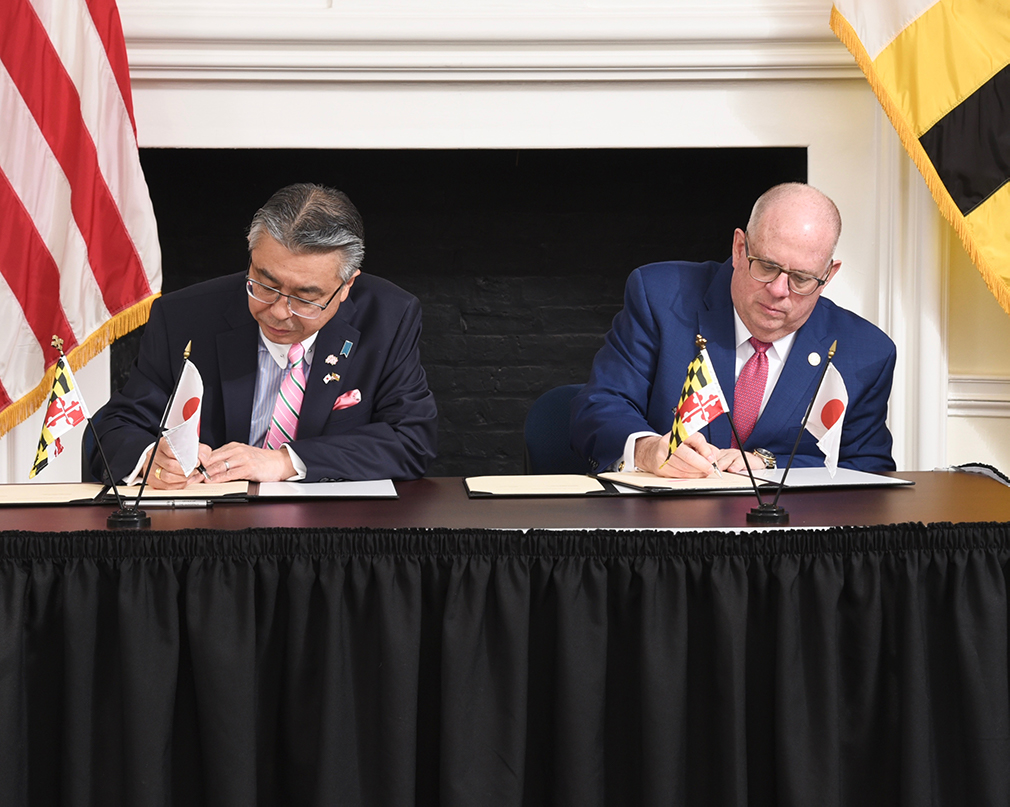
Governor Larry Hogan and Ambassador Shinsuke Sugiyama sign a renewal of the Memorandum of Cooperation on March 25, 2019 in Annapolis, MD. Photo Credit: Executive Office of the Governor
The state of Maryland and Japan also share a strong relationship. In March 2019 Governor Larry Hogan was joined by Ambassador Shinsuke Sugiyama to sign and renew a Memorandum of Cooperation that reinforces the continuing relationship between Maryland and Japan.
The renewal highlights the regions’ continued commitment to working together to promote trade, investment, life sciences collaboration, academic exchanges and information sharing. This memorandum included a special focus on the 2020 Summer Olympic and Paralympic Games in Tokyo.
“Today, we celebrate the continued strong and flourishing relationship between the State of Maryland and the government of Japan,” said Governor Hogan. “With the renewal of this Memorandum of Cooperation, we are highlighting our continued commitment to work together in areas including high-speed rail, liquefied natural gas, the life sciences, trade and investment, and academic cooperation.”
There are an estimated 100 Japanese companies operating in Maryland, many of which are in the life sciences sector. Together, these companies employ 5,700 workers throughout the state. There are also at least 12 universities and colleges throughout Maryland with active Japanese exchange programs.
The modern U.S.-Japan relationship is a story of friendship. It is a story of mutual interests and benefits derived from cooperation and openness. As such, both countries gain enormously. SCMAGLEV along the Northeast Corridor will be a high-tech transportation solution worthy of the U.S.-Japan relationship and friendship.
